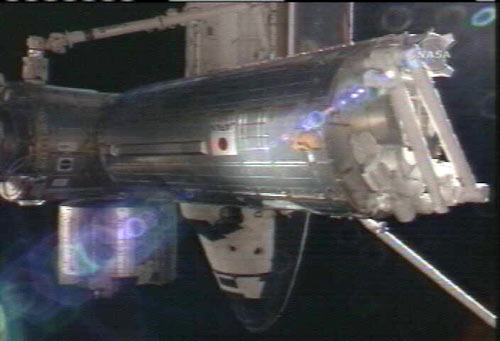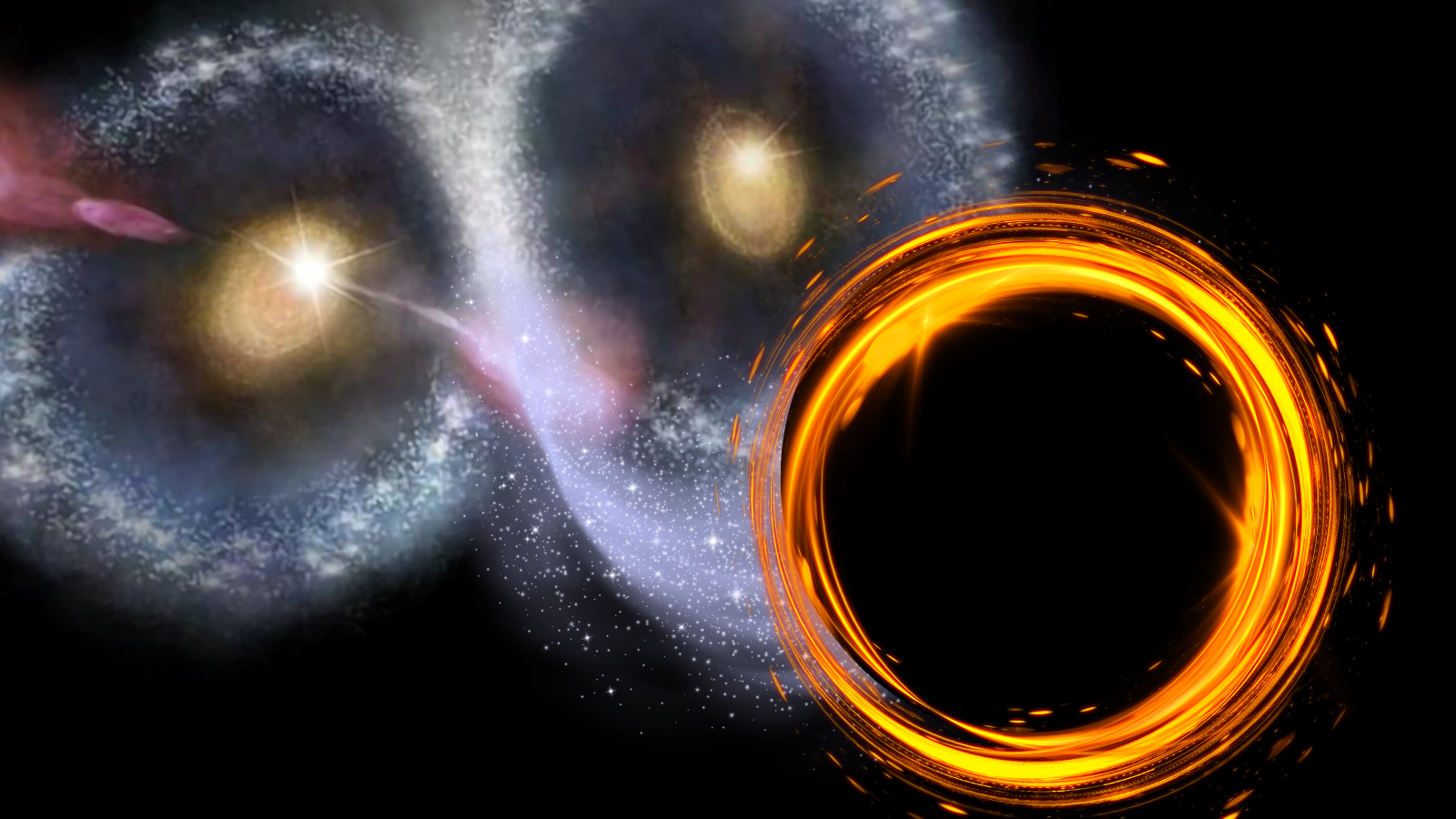Astronauts to Add Attic to New Space Station Lab

HOUSTON — A giant laboratory aboard the International Space Station (ISS) will get a bit bigger today when astronauts add an attic to the already tour bus-sized Japanese module.
Wielding the space station's robotic arm, astronauts will pluck a storage closet from a temporary perch and attach it to a more permanent home on the roof of Japan's $1 billion Kibo laboratory module.
"It's a pretty simple move," space station flight director Annette Hasbrook said late Thursday here at NASA's Johnson Space Center. "The crew will control all of it."
Discovery shuttle astronaut Karen Nyberg — the chief robotic arm wrangler for NASA's STS-124 mission — will lead the Kibo module move, with Japanese astronaut Akihiko Hoshide and station flight engineer Greg Chamitoff watching over the docking rings between the two orbital rooms.
The move is slated to begin at about 2:57 p.m. EDT (1857 GMT) today, with Nyberg hoisting the storage closet — also known as the Japanese Logistics Module (JLP) — from the top of the station's hub-like Harmony node and moving it about 30 feet (10 meters) to the rooftop of Kibo. The actual move is expected to take less than an hour once vestibules between the rooms are prepared, NASA officials said.
"We're looking forward to [Friday], and then the following day, for the JLP relocation and the robotics system's initial checks," Tetsuro Yokoyama, deputy Kibo operations project manager, told reporters Thursday.
Kibo's storage room was delivered last March during an earlier shuttle mission to await the arrival of its parent module, the Japanese Pressurized Module, which Hoshide and his STS-124 crewmates installed earlier this week.
Breaking space news, the latest updates on rocket launches, skywatching events and more!
The squat storage module weighs about 18,490 pounds (8,387 kg), is about 14.4 feet (4.4 meters) wide and 13 feet (4 meters) long. But it is dwarfed by the larger research module, a massive 32,000-pound (14,514-kg) orbital room that is about 37 feet (11 meters) long and includes two windows, a small airlock and a 33-foot (10-meter) main robotic arm.
A porch-like external platform and a second, smaller robot arm to handle external experiments are slated to round out the Kibo facility when they launch aboard a NASA shuttle next year.
To prepare for today's module move, the joint 10-astronaut crew of Discovery and the station removed eight phone booth-sized equipment racks from the storage room and installed them inside the main Kibo lab on Thursday. Two spacewalkers also cleared the lab's roof-mounted docking port to receive the smaller module that day and installed new cameras to aid use of Kibo's robotic arm.
"The JLP needs to be completely empty," Hoshide said of today's move in a NASA interview. "The plan is not to have any racks inside because we're trying not to freeze [them] just in case a heater failed and we can't have the module warmed up."
In addition to moving the storage room, shuttle commander Mark Kelly and station commander Sergei Volkov are expected to discuss their joint mission with reporters on Earth today.
NASA's Mission Control here at the Johnson Space Center roused Discovery's crew Friday with the song "Bright as Yellow" by the band Innocence Mission, a tune chosen especially for Nyberg, who is making her first spaceflight and is the 50th woman ever to fly in space.
"Good morning Discovery, and a special good morning to you today Karen," NASA astronaut Shannon Lucid radioed up to the shuttle.
"Good morning Shannon and everybody in Houston," replied Nyberg, who will be the first person to wield three different robotic arms in orbit during her mission. "Thank you so much for waking us up with that music."
NASA is broadcasting Discovery's STS-124 mission live on NASA TV on Saturday. Click here for SPACE.com's shuttle mission updates and NASA TV feed.

Tariq is the award-winning Editor-in-Chief of Space.com and joined the team in 2001. He covers human spaceflight, as well as skywatching and entertainment. He became Space.com's Editor-in-Chief in 2019. Before joining Space.com, Tariq was a staff reporter for The Los Angeles Times covering education and city beats in La Habra, Fullerton and Huntington Beach. He's a recipient of the 2022 Harry Kolcum Award for excellence in space reporting and the 2025 Space Pioneer Award from the National Space Society. He is an Eagle Scout and Space Camp alum with journalism degrees from the USC and NYU. You can find Tariq at Space.com and as the co-host to the This Week In Space podcast on the TWiT network. To see his latest project, you can follow Tariq on Twitter @tariqjmalik.
